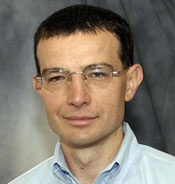Program Information
US Guidance for RT Interventions
X Li1*, D Hristov2*, K Ding3*, (1) Medical College of Wisconsin, Milwaukee, WI, (2) Stanford University Cancer Center, Palo Alto, CA, (3) Johns Hopkins University, Baltimore, MD
Presentations
MO-DE-210-0 (Monday, July 13, 2015) 1:45 PM - 3:45 PM Room: 210
Ultrasound imaging is an attractive method for image guided radiation treatment (IGRT), by itself or to complement other imaging modalities. It is inexpensive, portable and provides good soft tissue contrast. For challenging soft tissue targets such as pancreatic cancer, ultrasound imaging can be used in combination with pre-treatment MRI and/or CT to transfer important anatomical features for target localization at time of treatment. The non-invasive and non-ionizing nature of ultrasound imaging is particularly powerful for intra-fraction localization and monitoring. Recognizing these advantages, efforts are being made to incorporate novel robotic approaches to position and manipulate the ultrasound probe during irradiation. These recent enabling developments hold potential to bring ultrasound imaging to a new level of IGRT applications. However, many challenges, not limited to image registration, robotic deployment, probe interference and image acquisition rate, need to be addressed to realize the full potential of IGRT with ultrasound imaging.
Learning objectives:
1. Understand the benefits and limitations in using ultrasound to augment MRI and/or CT for motion monitoring during radiation therapy delivery.
2. Understanding passive and active robotic approaches to implement ultrasound imaging for intra-fraction monitoring.
3. Understand issues of probe interference with radiotherapy treatment.
4. Understand the critical clinical workflow for effective and reproducible IGRT using ultrasound guidance.
Funding Support, Disclosures, and Conflict of Interest: The work of X.L. is supported in part by Elekta; J.W. and K.D. is supported in part by a NIH grant R01 CA161613 and by Elekta; D.H. is support in part by a NIH grant R41 CA174089.
Contact Email:







